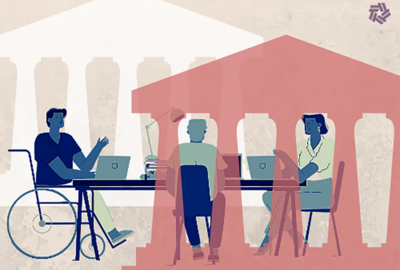CIGIE’s ‘roadmap’ moves DEIA efforts from words into clear actions
To try to guide the IG community on a path to better diversity, equity, inclusion and accessibility, a CIGIE committee launched a major update to its DEIA roadmap.
After a push from the White House, most agencies have spent the last couple of years trying to improve diversity, equity, inclusion and accessibility in the federal workforce.
But for the federal oversight community, the journey toward a more equitable and diverse workforce started even earlier — before President Joe Biden issued the 2021 executive order.
“We started this DEIA committee because we felt like we needed to make sure that we had a mechanism where folks could come together and really talk about things and create a safe place for us to enhance our DEIA competency,” Sandra Bruce, Inspector General for the Department of Education, said in an interview with Federal News Network. “It really is a journey, not a destination.”
As chairperson of the DEIA committee for the Council of the Inspectors General on Integrity and Efficiency (CIGIE), Bruce has largely led the work for the inspector general (IG) community. At its center, that has involved laying out a plan of action for all IG offices — called the DEIA “roadmap” — to improve DEIA in their reports as well as the employees working on them.
In November, the CIGIE DEIA committee launched a major update to the roadmap, after it first created the document in June 2022.
The roadmap details different areas of the workplace that DEIA touches, and includes recommendations on what milestones to look for, how to reach goals, and how to measure progress. It covers the entire employee lifecycle — hiring, training, performance management and more.
In the update, the committee added more guidance on combating harassment, and improving equity and accessibility.
“As we learn more, we try to incorporate more,” Bruce said. “We put accessibility throughout the roadmap, but as we were preparing it, we went back and looked at it and said, ‘you know, we can do a deeper dive about accessibility.’”
That deeper dive covers how accessibility should be woven through products, services, policies and procedures. OIGs should start with a self-assessment and pick out areas for both improvement and collaboration, the roadmap said.
A lot of the work for improving accessibility at OIGs comes from education and awareness too, according to the roadmap.
For example, “folks don’t necessarily think about reasonable accommodations when it comes to a woman carrying a child,” Bruce said. “But there are certain things that could be used as a reasonable accommodation. And with execution, just making sure that we are promoting those leading practices and our workplaces, making sure we’re compliant with standards, making sure we’re identifying gaps, and making sure we’re removing those barriers.”
There are opportunities to improve DEIA in the hiring process as well.
“When you’re thinking about equity, it’s not just within our oversight,” Bruce said. “We’ve got to think about our people, because our people are the ones who conduct the oversight work.”
And the diversity of the workforce then translates into the diversity of IG reports, Bruce said. Some oversight programs already inherently focus on the DEIA angle. Now, the CIGIE DEIA committee is aiming to deepen the connection between the workforce and the work across the broader IG community.
The committee used examples from certain offices to create a compendium of IG reports that exemplify the level of DEIA that the leaders said all OIGs should strive for.
“The work was already there, so to speak, because some programs are designed specifically for certain groups,” Bruce said. “Now we have an opportunity to take it just one step further and say, ‘OK, let’s add these additional tools that we now know about, and that we feel more comfortable about.’”
Ultimately, Bruce’s goal is to get DEIA context into reports wherever possible, and have staff think critically about the roles of equity and accessibility in oversight work.
“I don’t see the program oversight function changing, I see how we’re reporting those details becoming more and more refined,” Bruce said.
To make that happen, Bruce said the next step can start with something as simple as project assignments and asking employees for more input.
“When you’re now doing your oversight work, it gives you a lens because now you’re building equity into process,” Bruce said. “So, you’re getting different perspectives, you’re talking about projects before you actually start them as part of planning. There may be some personal experiences that folks may feel or something that they have had to deal with in their own families … And then while you’re putting that lens over the methodology that you’re using to do your oversight work, it just makes it that much better.”
But for Bruce, DEIA is about more than the definitions agencies often rely on.
“If we get stuck on those four letters — DEIA — we are going to lose the trajectory of what it really means,” Bruce said. “But if we really think about people, our workforce and our workplaces, and how it is so important to invest in both, then we’ll have some great, innovative and impactful work coming out of agencies, organizations and communities as a whole.”
Copyright © 2025 Federal News Network. All rights reserved. This website is not intended for users located within the European Economic Area.
Drew Friedman is a workforce, pay and benefits reporter for Federal News Network.
Follow @dfriedmanWFED





